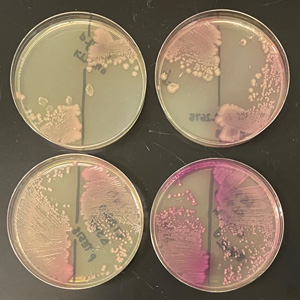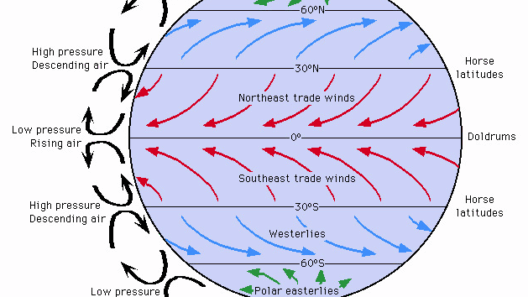The increasing menace of global warming has woven a tapestry of complexities affecting myriad aspects of our environment. Among these, aquifers—those subterranean reservoirs of water—stand at the precipice of an existential crisis. As temperatures rise and climate patterns shift, the subtle yet critical mechanisms governing aquifer health are thrown into disarray. The impact is profound, challenging our existing paradigms of water resource management and urging us to reconsider our relationship with this most vital of resources.
Aquifers are crucial for our survival, serving as the primary source of potable water for millions globally. They perform an indispensable role in maintaining biodiversity, supplying irrigation for agriculture, and sustaining ecosystems. However, the encroachment of global warming signals a new epoch of challenges that requires urgent attention. Increased evaporation rates, altered precipitation patterns, and a burgeoning demand for freshwater due to a growing populace are but a few ramifications that bring aquifer sustainability into question.
The warming atmosphere enhances evaporation from land and water surfaces, leading to decreased water availability in many regions. Increased temperatures reduce the snowpack that feeds rivers and aquifers, compounding the issue further. Areas historically reliant on glacial meltwater during dry seasons are beginning to experience shortages. Consequently, this has significant ramifications on local biodiversity and the agricultural cycles that have sustained communities for millennia.
Climate change exacerbates the cyclical relationship between aquifers and the atmospheric system. Higher temperatures can lead to increased groundwater extraction as farmers and municipalities attempt to adapt to erratic weather patterns. This extraction often occurs without a comprehensive understanding of the aquifer’s replenishment rate, creating a detrimental cycle that can deplete these critical water sources faster than nature can restore them. Over-extraction can lead not only to water scarcity but also to land subsidence, where the ground sinks due to the removal of supporting groundwater, resulting in infrastructural and ecological predicaments.
Moreover, rising sea levels, a direct consequence of climate change, pose another significant threat to aquifers. Coastal aquifers, in particular, are vulnerable to saltwater intrusion, where seawater permeates freshwater systems. As glaciers and polar ice caps melt, the influx of saltwater disrupts the delicate balance, rendering vast freshwater supplies undrinkable and impacting agricultural activities that depend on freshwater irrigation. The implications are dire, potentially leading to increased competition for freshwater resources and heightened geopolitical tensions as nations scramble to secure their water needs.
The interlinkage between aquifers and human activity underscores the necessity of adopting more sustainable practices. Implementation of integrated water resource management (IWRM) strategies is paramount. This involves stakeholder engagement at the community level, promoting conservation efforts, and enhancing efficiencies in water use across sectors. Technologies such as rainwater harvesting and the restoration of natural watersheds can also mitigate the pressures on aquifers. Each small step, when collectively embraced, can contribute to a broader paradigm shift, emphasizing a more sustainable coexistence with our earth’s resources.
Public awareness surrounding aquifers and their plight is equally crucial. Society often overlooks this hidden lifeblood, focusing instead on surface water bodies that are more visible and tangible. By promoting education and awareness campaigns, communities can recognize the vital role aquifers play in their daily lives and the necessity of safeguarding them against the looming threats of climate change.
The intersection of policy and science must also be emphasized. Legislation can foster advancements in water conservation technologies and incentivize research into sustainable practices that bolster aquifer resilience. However, policymakers must engage with scientists and environmentalists to ensure decisions are informed by the latest research and data. This collaborative effort can spark innovative strategies to monitor and manage aquifer systems proactively, addressing the challenges imposed by climate change.
Ecologically, protecting aquifers functions as a bulwark against the climate crisis. Healthy aquifers can support resilient ecosystems, enhancing biodiversity and mitigating the effects of floods and droughts through natural water storage capabilities. The preservation of wetlands, for instance, can enrich the aquifer recharge process while also offering habitats for numerous plant and animal species. Emphasizing an ecological approach to water management—wherein aquifers are intrinsically linked to the health of surrounding ecosystems—can fortify both our freshwater supplies and our natural heritage.
The time for action is now; to sustain these critical lifelines, we must confront the intricacies of our water systems head-on. Society must pivot toward holistic, inclusive approaches that recognize the intrinsic links between climate health, water resources, and social equity. As we collectively address the challenges posed by global warming, a reframed appreciation for aquifers will emerge, reinforcing the notion that these hidden reservoirs are not merely subsurface water sources but are integral components of our planetary well-being.
In closing, the challenges presented by global warming require a multi-faceted response that encompasses sustainable practices, informed governance, and heightened public awareness. We stand at a crossroads where the decisions made today will shape the viability of aquifers for generations to come. By fostering curiosity and commitment to safeguarding these invaluable resources, we can forge a path towards a sustainable future, ensuring that aquifers continue to nourish both humans and ecosystems alike.







